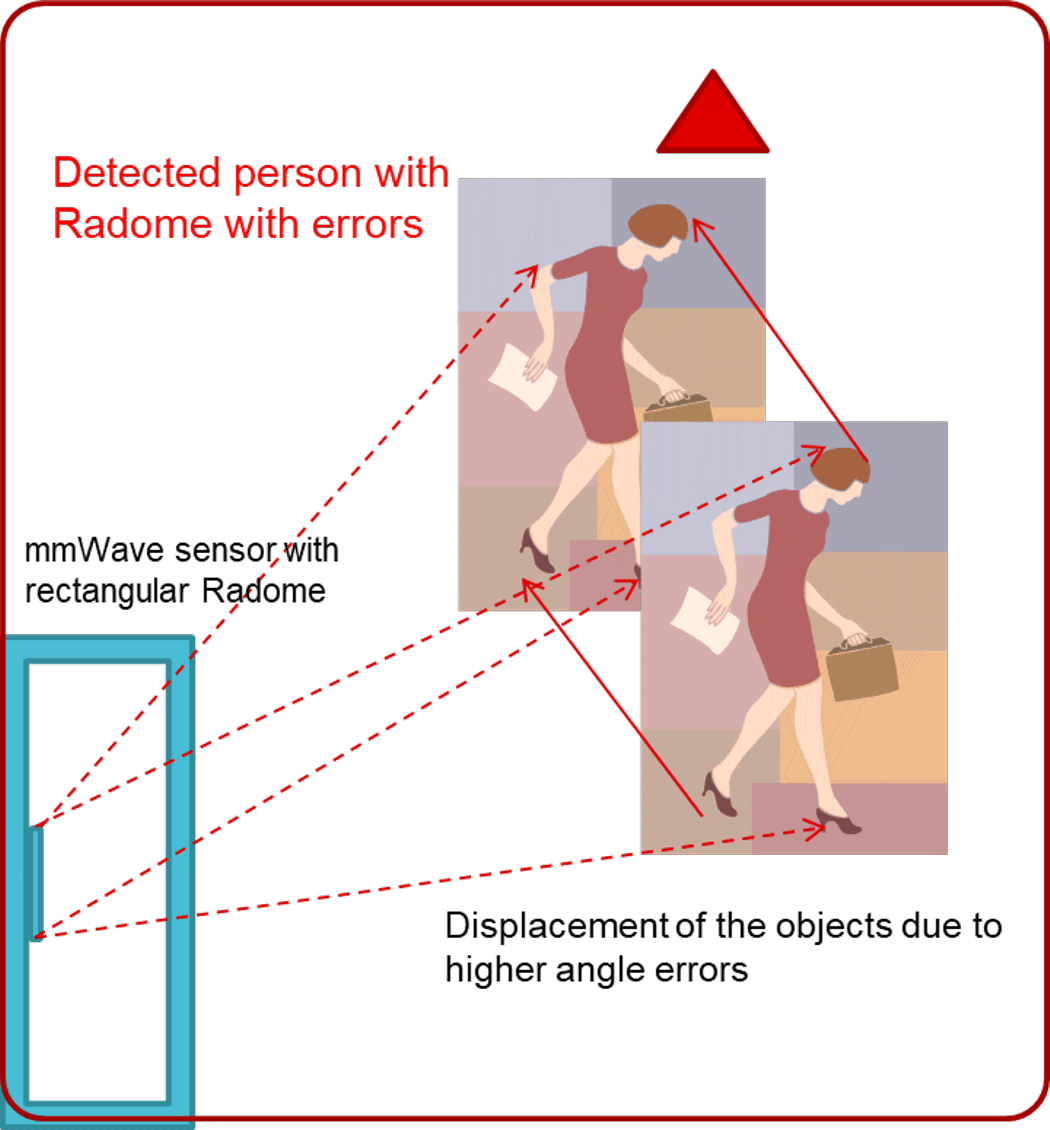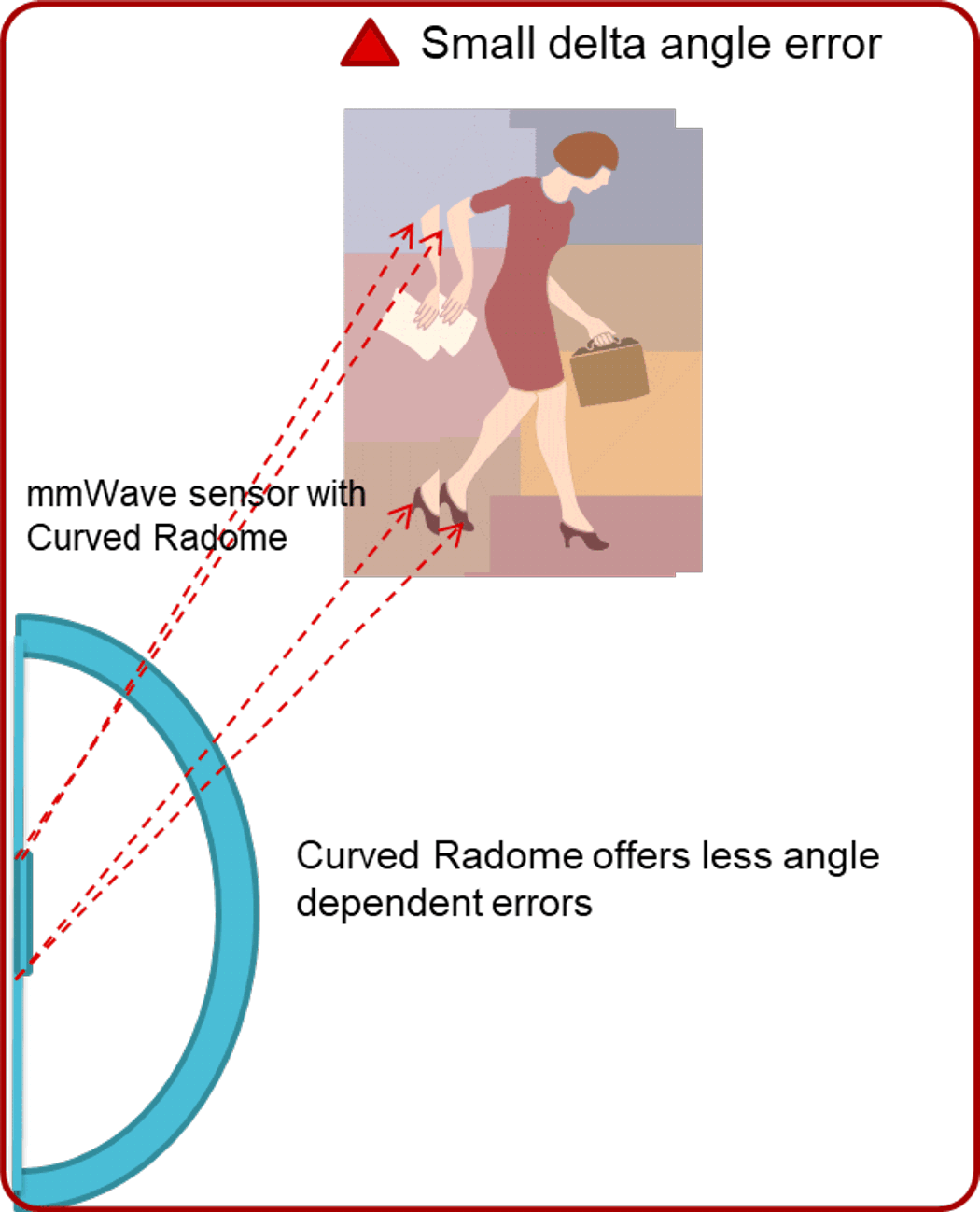SWRA705 August 2021 AWR1243 , AWR1443 , AWR1642 , AWR1843 , AWR1843AOP , AWR2243 , AWR2944 , AWR6443 , AWR6843 , AWR6843AOP , AWRL1432 , AWRL6432 , IWR1443 , IWR1642 , IWR1843 , IWR2243 , IWR2944 , IWR6243 , IWR6443 , IWR6843 , IWR6843AOP , IWRL6432 , IWRL6432AOP
4.3 Effect of the Angle Error in the Application
Figure 4-3 and Figure 4-4 shows the effect of the angle estimation error on the detected objects due to both rectangular and spherical radome. Due to the larger distance traveled at higher grazing angles in rectangular radomes, the latter is more prone to an angle estimation error relative to spherical radome structures. It may appear that the object is displaced from the original location. This angle estimation error gets more severe as object to radar distance increases.
 Figure 4-3 The Effect of Angle
Estimation Error With Rectangular Radomes
Figure 4-3 The Effect of Angle
Estimation Error With Rectangular Radomes  Figure 4-4 The Effect of Angle
Estimation Error With Spherical Radomes
Figure 4-4 The Effect of Angle
Estimation Error With Spherical Radomes